In the realm of institutional trading and smart money concepts (SMC), the Fair Value Gap (FVG) stands out as a crucial concept introduced by ICT (Inner Circle Trader). Understanding FVGs allows traders to identify market inefficiencies, where price is likely to return before continuing in its intended direction.
This guide breaks down FVG and related concepts such as BISI/SIBI, Consequent Encroachment (CE), Inversion, Volume Imbalance, and Gaps, using clear explanations and real-world examples. If you’re serious about mastering ICT strategies, this is foundational knowledge you must understand and apply.
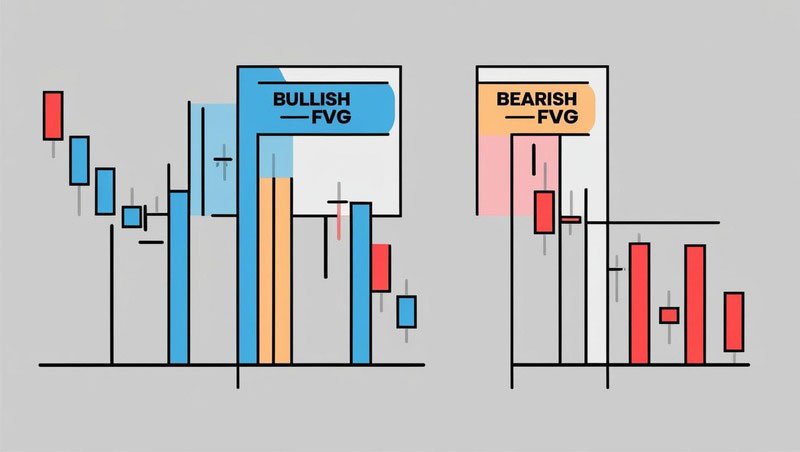
What Is a Fair Value Gap (FVG)?
A Fair Value Gap is a three-candle pattern where a gap forms between the first and third candles, suggesting a liquidity void. This imbalance often results in price retracing to “fill the gap” before continuing.
Structure:
- Candle 1: Strong impulsive move
- Candle 2: Continuation with little overlap
- Candle 3: Leaves a visible gap between Candle 1 and 3
⭐ Important: FVGs represent areas where institutions may have unfilled orders. Price often returns here to rebalance.
Fair Value Gap Examples
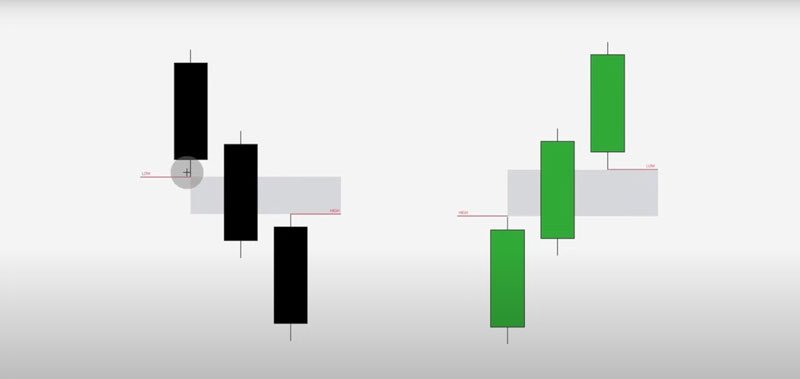
Bullish FVG Example
- Candle 1: Bullish with long body
- Candle 2: Bullish continuation
- Candle 3: Price moves quickly, leaving a gap between low of Candle 3 and high of Candle 1
- Price later retraces into the gap and resumes upward
Bearish FVG Example
- Same concept, but with bearish candles
- Price returns to the gap before resuming the downtrend
⚠️ Tip: Align FVGs with higher time-frame bias for better accuracy.
What Is BISI / SIBI?
- BISI: Bullish Imbalance Sell-side Inefficiency
- SIBI: Sell-side Imbalance Buy-side Inefficiency
These are advanced ICT terms for refined FVG concepts.
BISI:
Occurs during bullish momentum where there is an imbalance and a void on the sell-side. Institutions may re-enter these zones to complete orders.
SIBI:
Occurs in bearish structures where a buy-side inefficiency creates a likely return zone.
⭐ Key takeaway: BISI/SIBI = refined labeling of FVGs to pinpoint liquidity behavior.
BISI / SIBI Examples
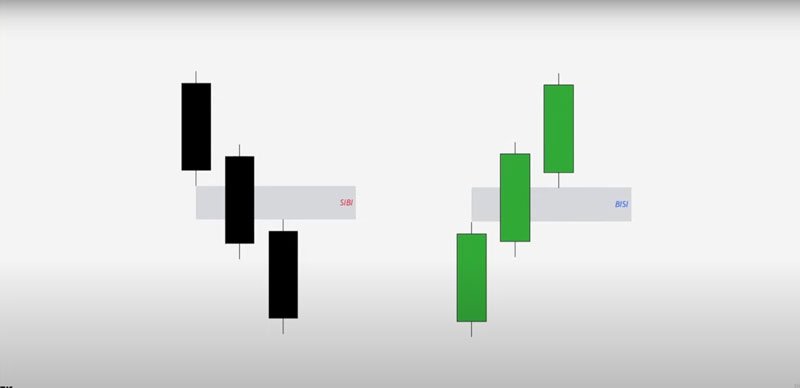
BISI Example
- 3 bullish candles, with increasing momentum
- Middle candle has little to no wick overlap
- Price breaks away, returns to fill inefficiency, and resumes
SIBI Example
- 3 bearish candles with sharp drop
- Gap between first and third
- Price pulls back into imbalance and continues downward
📌 Pro tip: Mark the gap zone using candle wicks for better entries.
What Is Consequent Encroachment (CE)?
The Consequent Encroachment (CE) is the 50% midpoint of the Fair Value Gap. It acts as a highly precise level where price often reacts.
Formula:
CE = (High of Candle 1 + Low of Candle 3) / 2
✨ Traders should observe CE as a refined entry point within FVG zones.
CE Examples
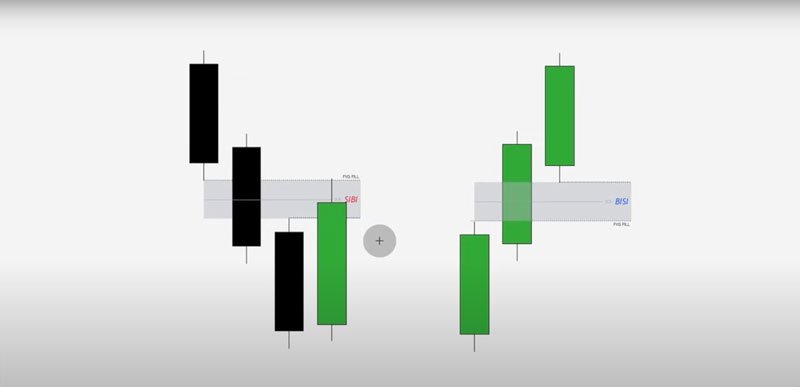
Bullish CE Example
- FVG forms
- Price returns into the gap and taps the 50% CE level
- Rejection confirms continuation
Bearish CE Example
- Price retraces into the gap, touches CE line, then resumes the downtrend
⬆️ CE levels often act like support/resistance within gaps.
What Is Inversion in ICT Terms?
Inversion refers to the role reversal of a previous FVG or imbalance zone.
Example:
- A bearish FVG, once filled and broken, can become a support zone in future
- Similarly, a bullish FVG may turn into resistance
🏛️ Inversion zones are strong SMC levels and can align with order blocks and liquidity grabs
Inversion Examples
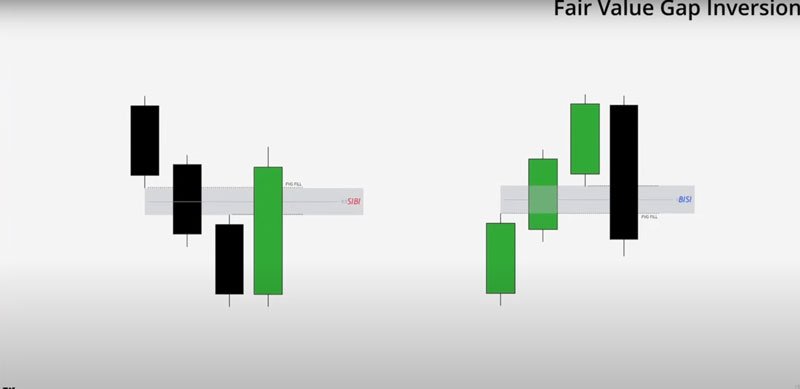
- Price fills bearish FVG → breaks through → comes back to retest → bounces from old FVG zone
- Price uses old gap as new base for trend continuation
⚡ Always re-evaluate FVG zones after they’ve been violated
FVG vs. Volume Imbalance vs. Gap
| Feature | Fair Value Gap | Volume Imbalance | Gap |
| Based on candles | Yes | No | Yes |
| Based on volume data | No | Yes | No |
| Acts as entry zone | Yes | Sometimes | Rarely |
Fair Value Gap:
- Three-candle pattern
- Price often returns to fill
Volume Imbalance (VI):
- Occurs when more volume trades on one side of the order book
- Indicates institutional pressure
Gap:
- Often news-driven
- Big space between closing and opening price (e.g., weekend gap)
❌ Don’t confuse gaps with FVGs — FVGs are structural, not just space between candles
Volume Imbalance Example
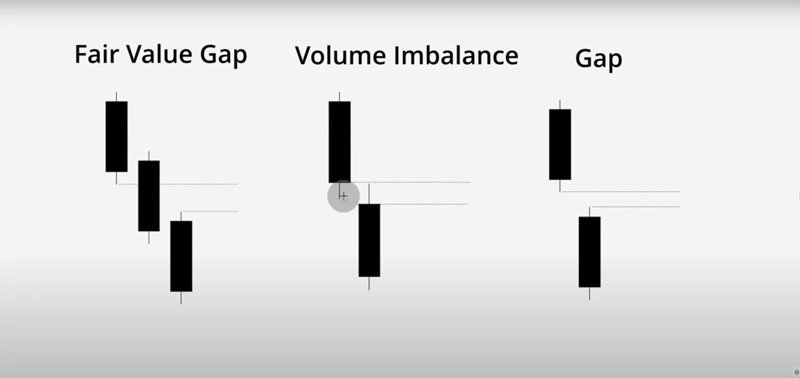
- High volume on bid but low on ask = imbalance
- Price quickly moves away
- Returns to the zone before resuming
🔹 Useful in confluence with FVGs for confirmation
Gap Example
- Weekend opens far away from Friday’s close
- Creates a price gap
- May or may not be filled, depending on fundamentals
⚠️ FVGs are internal, while gaps are external (open/close based)
Final Thoughts
The Fair Value Gap (FVG) is an essential building block in ICT and smart money trading. It helps traders:
- Understand market inefficiencies
- Predict retracement zones
- Align with institutional activity
When combined with tools like CE, inversion, and volume analysis, it becomes a powerful concept that gives you an edge in high-probability trades.
🌟 Mastering FVGs means mastering how smart money moves the market.
FAQ: Fair Value Gap in ICT
What is a Fair Value Gap in ICT?
It’s a three-candle price inefficiency where institutions may revisit to rebalance orders.
What is CE in FVG?
CE is the 50% midpoint of an FVG and often acts as a precise entry or reaction level.
What is the difference between FVG and a gap?
FVG is an internal structural inefficiency; gaps occur due to external events like market open gaps.
Can inversion FVG zones be used as support/resistance?
Yes, after being filled and broken, FVG zones can flip roles and act as support or resistance.
Should I trade every FVG I see?
No. Use FVGs with confluence (e.g., higher TF bias, liquidity zones, order blocks) for higher accuracy.









